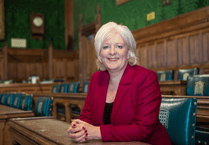The national grid already runs for short periods with next to no fossil fuels. Last month a record 97% of electricity was generated using zero-carbon energy sources for a short period and a new record of 94% was set for a whole day.
These new records give National Grid confidence to run a 100% zero-carbon electricity grid for short periods from next year. They anticipate that half the electricity would be generated by onshore and offshore wind, a third by solar, a tenth by nuclear and biomass, and a tenth imported through undersea cables called interconnectors from renewable sources in Europe.
We have transformed how we generate electricity before. The UK created the first national electricity grid in the world in 1935 powered by coal, adding oil in the 1950s and from the 1960s nuclear. These were eclipsed in the 1990s, when electricity generation underwent a rapid transformation to gas-fired power stations.
The speed at which gas is now being replaced by renewables for electricity generation is astonishing. Just 15 years ago, gas and coal power plants made up 75% of electricity generation, while renewables were a paltry 2%. Last year, more electricity came from renewables than from fossil fuels. This rapid progress is mirrored around the world. Nearly 50 countries in Europe, South America and Africa now generate more than 50% of their electricity from renewable energy sources.
Making the electricity grid carbon-free is the first step. The next step is to electrify everything. A kilowatt-hour of electricity was responsible for about 500g of CO2 emissions in 2012, this is now only 150g and will soon be close to zero. Switching to technologies that are powered by electricity is how we will eliminate the emissions from fossil fuels that are damaging our climate.
We can all be part of this energy transition. It is possible to dispense with gas and oil in the home altogether and power our daily lives entirely on electricity using electric cars, scooters and bikes, electric heat pumps, electric induction hobs, and cordless battery-operated power tools and lawnmowers. These small changes to how we do things will give us a safer, healthier future.
And it won’t necessarily cost more. With a renewable energy system, there will be times when there is a surplus of energy, and our electricity will be cheap or even free. With a smart meter and your energy supplier’s phone app, combined with a time-of-use tariff, you can save money by matching your consumption to times when the grid is running on renewables and the price is low.
The Agile Octopus tariff goes a step further and will pay consumers to take energy off the grid whenever the wholesale price drops below zero – this happens when a surplus of renewable electricity is destabilising the grid. Octopus notifies customers by text alert and pays them to charge the car, run the dishwasher and charge their devices. The zero-carbon future is on the way.





Comments
This article has no comments yet. Be the first to leave a comment.